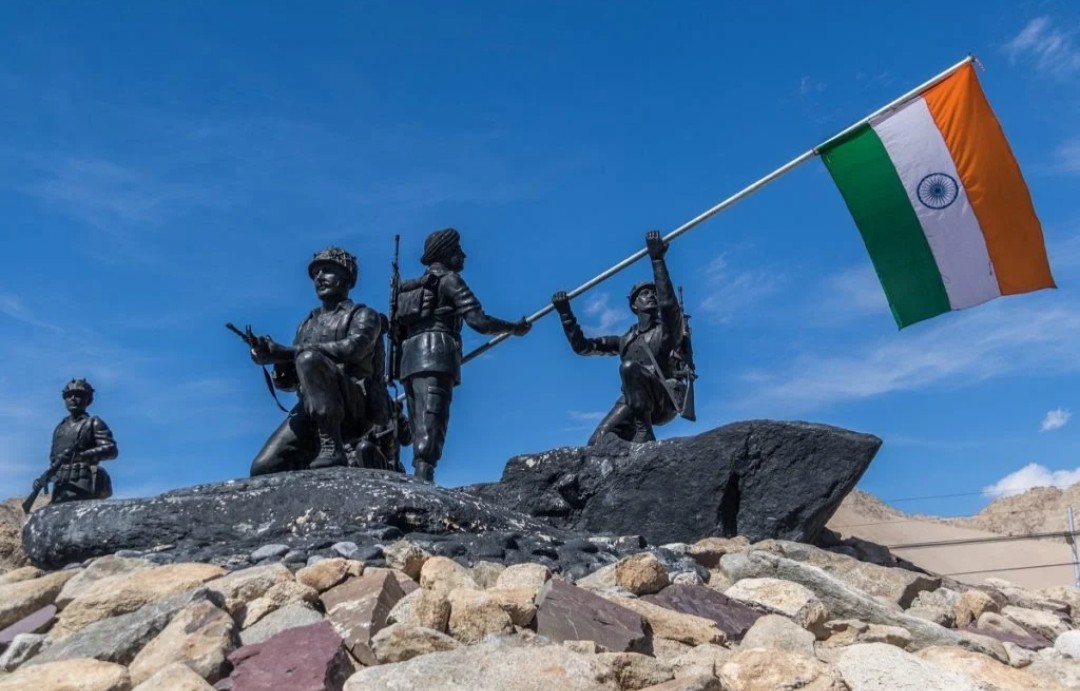Clear message given to Chinese that pushing back Indian soldiers physically will not work: Govt. Official
Shots have been fired in the air on multiple occasions on the north and south banks of Pangong Tso in eastern Ladakh recently, and the Chinese have been given a clear message that pushing back Indian soldiers physically will not work any more, a senior government official said on Thursday.
On its way: A convoy carrying supplies to Ladakh on the Manali-Leh highway last week. | Photo Credit: PTI
Stating that once a melee happens, like the Galwan clash on June 15, opening fire was not possible, the official pointed out, “Now, we said, if you come close we will fire. Distance is dependent on the conditions like day or night, location and so on… If they are about to be overrun or in self-defence, troops are authorised to fire.”
At the sixth round of Corps Commander talks early this week, India and China had agreed not to send any more troops to the frontline. “It is a good start. We have to wait and watch till there is concrete action on the ground, we will not lower our guard on the ground. Our stand is you moved first, so you move back first. That will be a good confidence-building measure (CBM),” the official said.
The sixth round of senior-level military-level talks also saw a joint statement being issued as well as the participation of an External Affairs Ministry official who deals with China, the official stated. Earlier, the Chinese side had tried to project that India did not have a “unified” stance on the continuing boundary stand-offs.
At the talks since the developments on the south bank since August 29, the Chinese want to resolve the latest incidents first, but India favoured a package resolution of the entire eastern Ladakh situation. “When we say status quo, what we mean is status quo before May,” the official stated.
Chinese deaths
The official revealed that the Chinese had conveyed through diplomatic channels that they had suffered five deaths, including their commanding officer, in the June 15 Galwan Valley clash, which left 20 Indian Army soldiers dead.
Asked why the Chinese had acted in the way they did, the official felt there was “no one overarching reason” but many reasons, including turning Jammu and Kashmir into a Union Territory in August 2019 and also to divert attention from China’s COVID-19 crisis.
Pointing out that the situation along the Line of Actual Control (LAC) in other sectors remains stable, the official said that local commanders on both sides were in contact and even they (the Chinese) had said: “Let not what’s happening in eastern Ladakh happen here”.
Interestingly, in the eastern sector, Indian and Chinese troops patrol contentious areas by weekly rotation, a formula that could be brought into play in eastern Ladakh as well.
The official asserted that there was no intelligence failure in detecting the Chinese movements in early May as they made ingress into the Indian side of the LAC. “Whoever moves first has the initiative and the first mover advantage,” the official, said stating they had been monitoring the Chinese all along.
Currently, troops are facing each other at Depsang, the north and south banks of Pangong Tso, and Patrolling Points 17A, Rezang La and Rechin La.
On possible collusion between China and Pakistan against India in the ongoing stand-off, the official said there was no major troop movement on the Line of Control (LoC), and only regular battalion movement was taking place.
“Nothing unusual on that front. We don’t see any build on the other side. But terror activities continue. We are quite strong on the ground, so we eliminate the threat on the LoC,” the official said.
On the global support to India in the ongoing stand-off and the transgressions by China and engagement with Quad countries, the official said: “At the end of the day, you have to fight your own battles”.
On the situation in the Depsang plains, where Chinese troops continue to block Indian patrols to the Patrolling Points 10-13, the official said there were one or two Chinese vehicles near the Y-junction, which kept going back and forth. Beyond the Y-junction, Indian patrols had to go on foot, which were being blocked by Chinese vehicles, the official stated, adding that patrol parties followed protocols and returned. “We have not given up our claims. It has only been temporarily halted due to the circumstances,” the official said.
With inputs from The Hindu
(This story has not been edited by Kashmir Today staff and is published from a syndicated feed.)

